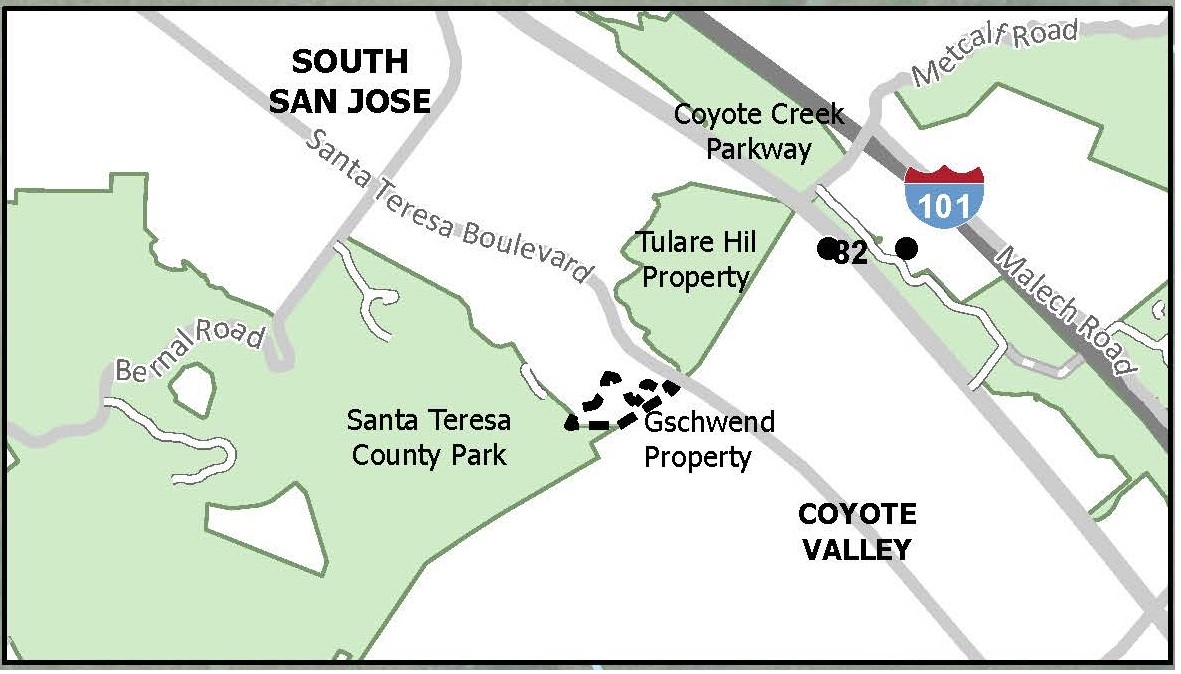
We’re giving thanks today as a critical wildlife crossing site in Coyote Valley has just been purchased for conservation! It was the fierce opposition from environmental groups and the Muwekma Ohlone Tribe of the San Francisco Bay Area that saved this land from being developed with a large luxury home.
This 17-acre parcel at the north end of Coyote Valley, known as the “Gschwend property,” forms an open-space bridge between Santa Teresa County Park and Tulare Hill (see map). An old canal that runs through the property leads to a culvert that is one of only two safe spots for animals to cross underneath Santa Teresa Boulevard without risking being hit by cars. The experts at Pathways for Wildlife have identified this site as critical for wildlife movement through Coyote Valley. The property is also a designated Critical Habitat for the threatened Bay checkerspot butterfly.

Despite this, the property was purchased several years ago by the Gschwend family for the purpose of building a 5,900-square-foot home. Last June, the San Jose Planning Commission was asked to approve this development project. Green Foothills, the Santa Clara Valley Audubon Society, and other environmental groups objected to the inadequate environmental review of the project. In addition, the Muwekma Ohlone Tribe of the San Francisco Bay Area submitted a detailed letter demonstrating thousands of years of residency in the area, including records of tribal presence very close by along Coyote Creek.
Based on this opposition, the Planning Commission refused to approve the development, instead directing staff to do more research on the impacts of developing this crucial wildlife area and tribal cultural landscape before bringing the project back for another vote.
On November 21, the Santa Clara Valley Habitat Agency purchased the Gschwend property from the landowner. We believe this acquisition would not have been possible without the opposition to the project from environmental groups, the Tribe, and the public. Together, we brought forward evidence concerning the impacts to ecological and cultural resources which caused the Planning Commission to demand more research. This may have been a deciding factor for the landowner to sell the land for conservation rather than continue the attempt to develop it.
Thanks to the Santa Clara Valley Habitat Agency, the Santa Clara Valley Audubon Society and all our other environmental partner organizations, and the Muwekma Ohlone Tribe of the San Francisco Bay Area for this great outcome!

Leave a Reply